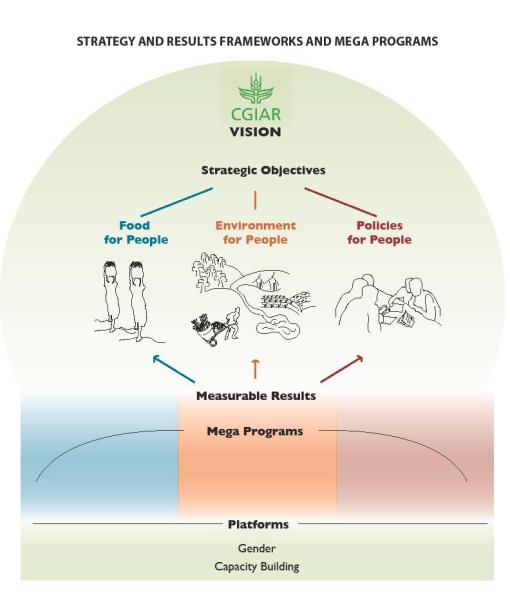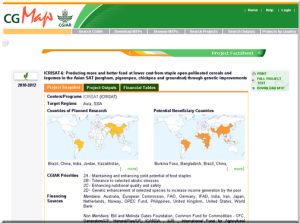We just concluded the CGIAR ICT annual meeting and the Alliance Deputies meeting on the shape of the Shared Services in the new consortium… . More on the results of these meetings later…
To prepare for the meetings, I looked at the proposed “Strategy and Results Framework” to how we could support the new CGIAR.

The proposed ‘Strategy and Results Framework’ introduces seven interlinked Mega Programs and two platforms — gender and capacity strengthening – that will serve as the building blocks for the work of the ‘new’ CGIAR.
How do information, knowledge, ICTs and related areas fare in these proposals?
Let’s see…. Mega-Program 3 is titled ‘Institutional Innovations, ICTs, and Markets.’ Its focus will be on: “Knowledge to inform institutional changes needed for a well-functioning local, national, and global food system that connects small farmers to agricultural value chains through information and communications technologies and facilitates policy and institutional reforms.”
This mega program “aims to unleash an ― institutional and information revolution – with and for farmers and the rural poor that improves and secures their livelihoods, and also promotes innovation along value chains.” It speculates that the “next big breakthrough in institutional innovation to be unleashed in support of poverty reduction, food and nutrition security, and environmental sustainability” might include: “linking of information and communications technologies (ICTs) to value chains and services for the poor in rural areas, through, for example, the cell phone and its increasing range of sophisticated derivatives.”
Within Mega Program 1 on ‘Crop Germplasm Conservation, Enhancement, and Use’, a program will “integrate bioinformatics and crop information systems.”
These proposals seem to recognize the importance of knowledge and information as well as ICT applications and tools within both CGIAR research processes and the agricultural innovation systems where organizations doing research and development interact. Hopefully, it will boost scattered efforts to increase research uptake, interaction and collaboration using ICTs and other innovative approaches to knowledge sharing in research.
Two cross-cutting platforms have been identified. The one on ‘capacity-building platform’ will “strengthen the capacity of the CGIAR and its partners through improved research networks, information technology, knowledge management systems, and training. The expected result is a dynamic knowledge creating and -sharing system comprising CGIAR centers, strong independent national agricultural research systems, and other research partners sharing knowledge.”
According to the plan, the capacity strengthening role of the CGIAR should “have two purposes: strengthening capacity for all Mega Program partners by fostering research collaboration and networking, and strengthening capacity for weak national agricultural research systems.”
The report goes on to say “An important element of both activities will be the development and use of advances in information and communication technologies (ICTs) and knowledge management and innovation systems, including access of Mega Program partners to applications and resources such as databases.”
These proposals seem to include work by CGIAR centers to make their data, information and knowledge accessible (see recent work on AAA and CIARD), so often limited-access knowledge is freed to be exchanged and re-used. Hopefully, they will not forget the importance of open licenses such as creative commons, and open access in general. The ‘public goods’ need to be made public! as Peter Ballantyne pointed out.
The results of our external review and the expectations laid out on the new Mega Programs will be the basis for a renewed ICT-KM strategy.





